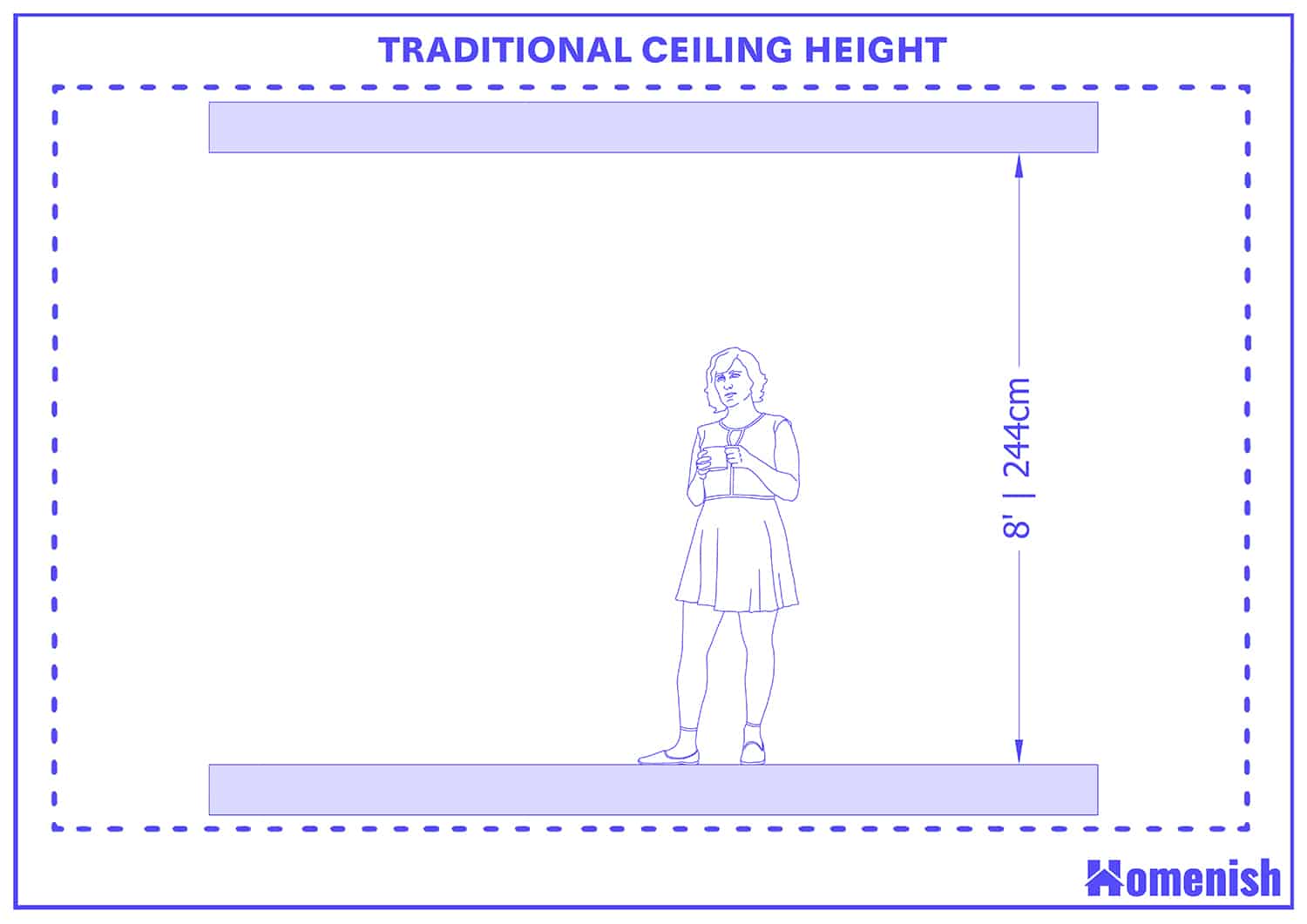
Standard Ceiling Height The Ultimate Guide (with 8 Diagrams) Homenish
Typically, the average bed height ranges from 1.5 ft to a maximum of 2 ft. Let's assume it's 2 ft for now. Additionally, if you install a ceiling fan, it usually requires around 1.5 ft of clearance from the ceiling. As a result, the distance from the bed to the ceiling fan is just 4.5 ft, which is shorter than the stature of many individuals.

Here's the Standard Ceiling Height for Every Type of Ceiling Bob Vila
The standard ceiling height is similar to the average ceiling height. The difference is that the standard ceiling height is what most people use while the average ceiling height takes all the numbers and averages them out. When this happens, those with high ceilings will raise the "average ceiling height" which is why we use standard.

AGuideToStandardCeilingHeight(2) Bayside Plasterboard
The average or standard ceiling height as of present is 9 feet. This wasn't the case before since, at some point, the standard ceiling height was 10 feet. Nevertheless, now, most contractors have agreed on 9 feet. Unfortunately, you may come across 8-feet ceilings since many boards come in eight-foot pieces.

Standard Ceiling Height RN RN RN RN BuildSearch Perth Building Broker
Standard Ceiling Height for Residential Structures. So, what is the magic number for standard ceiling heights these days? It's still 8 feet, although it's increasingly common to see 9-foot ceilings. "In some decades, it was the timber standard cut, and during the oil crisis years of the '70s and '80s, low ceilings helped with energy.

Room ya Ceiling ki Height Kitni honi chahiye? Ideal/ Minimum / Standard height in feet for house
Construction Cost. Higher ceilings generally require higher walls and more materials such as drywalling and paint. You can use the standard 8-foot wall and add trusses to make the ceiling higher, but this all will add to the cost of the project. The construction cost of a 12-foot ceiling will require substantially higher walls.
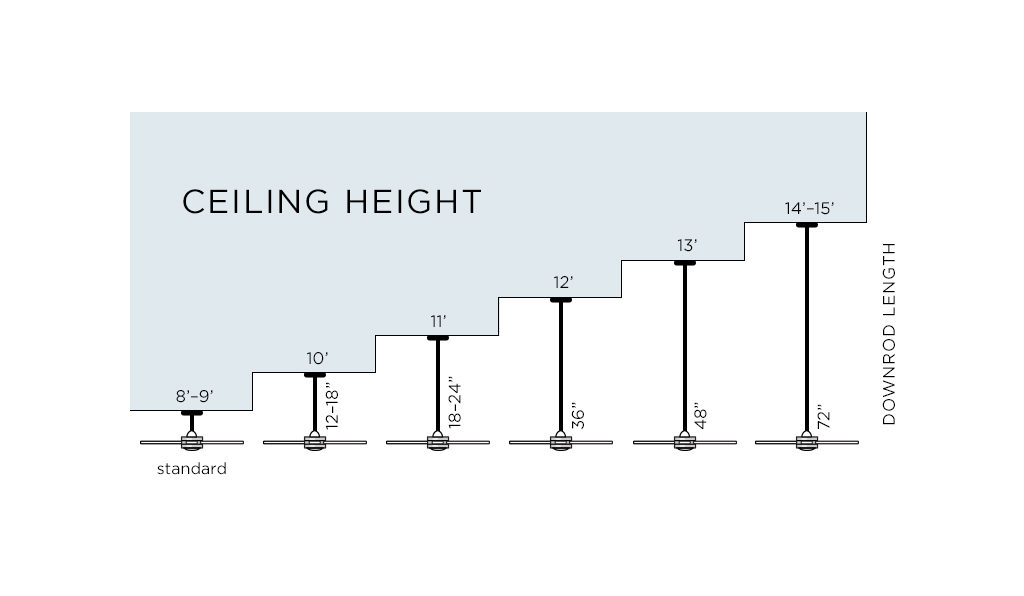
What Is The Average Ceiling Height
Since then, ceiling heights have changed from 8 feet to 10 feet to 9 feet, which is today's standard ceiling height. Only time will tell whether consumer demand will, once again, change the average ceiling height. But, right now, it appears that contractors, architects, and buyers have found a happy medium of 9 feet.

How Tall Is Floor To Ceiling Viewfloor.co
The standard ceiling height of bathrooms, however, tends to remain at 8 feet. Having said that, most people who live in warmer climates prefer higher ceilings that go beyond 9 feet high. This is because the difference in temperature at floor and ceiling level in a high ceiling room can be as much as 4 degrees celsius.
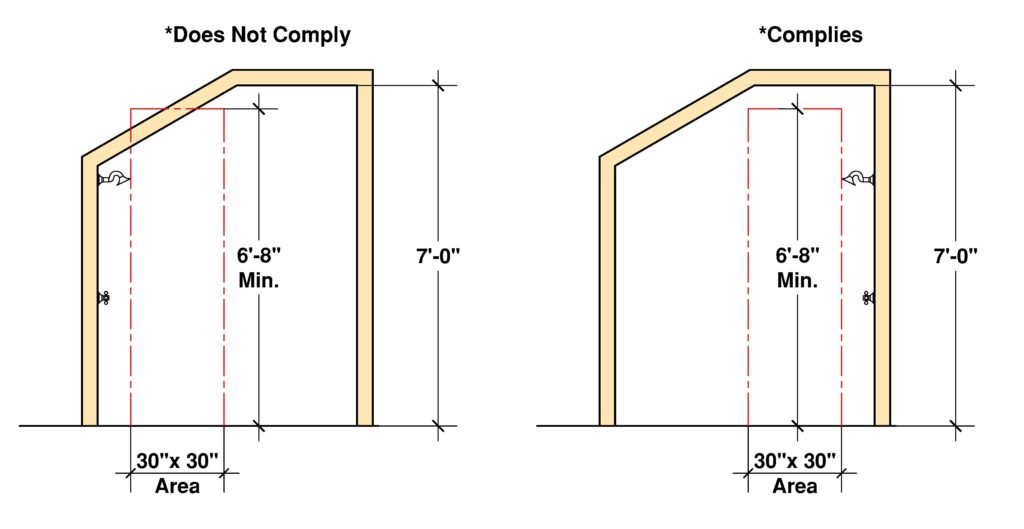
Standard Ceiling Height Us Shelly Lighting
Nowadays, Architects and engineers keep the floor-to-ceiling height about 10 feet in most cases. Again let's understand this fact also. So, the standard height of the ceiling is 10 ft for a normal residential house. The standard ceiling height from the floor is about 10 feet. Deducting the thickness of the slab becomes 9 feet 6 inches.
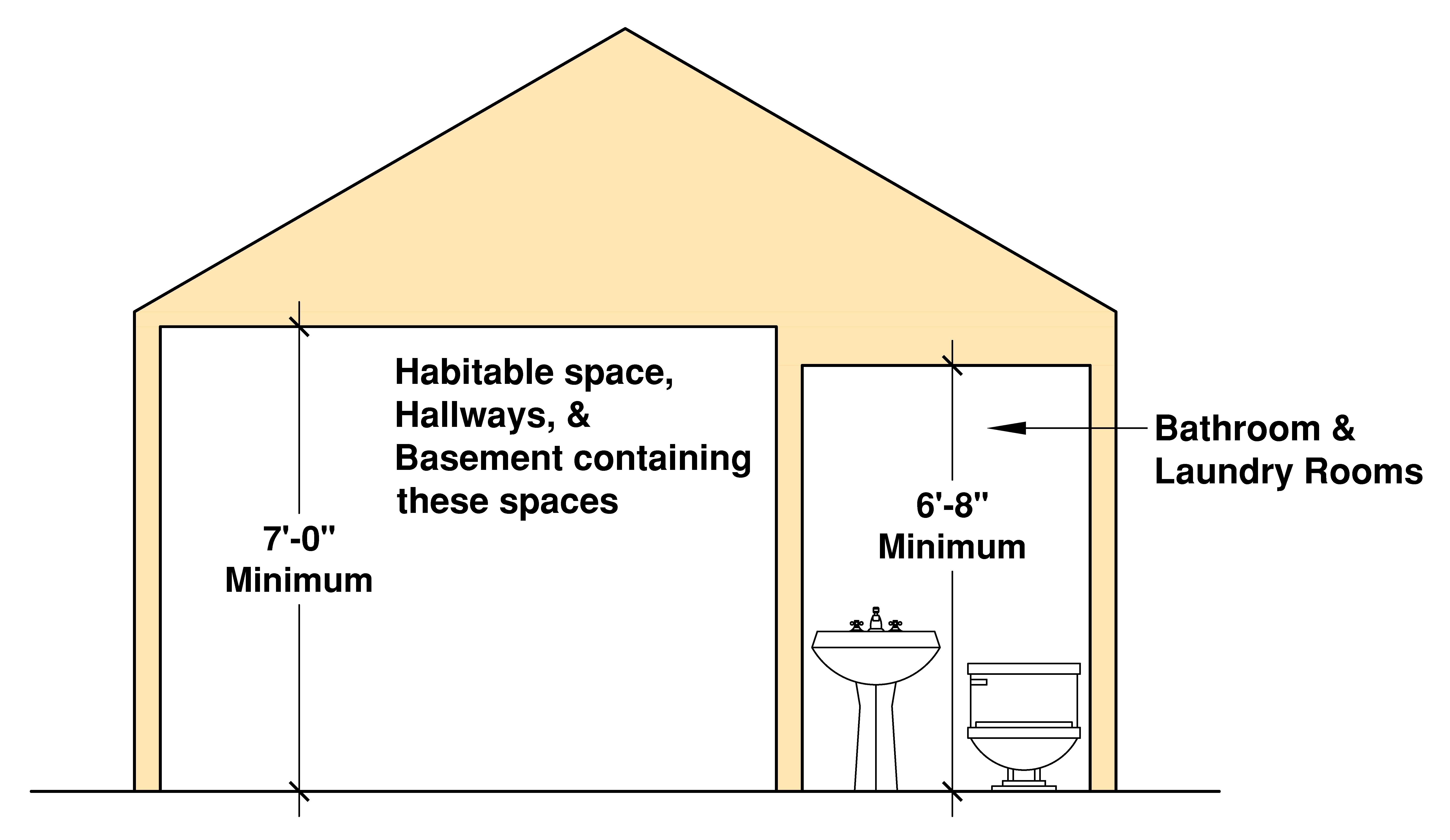
Minimum Ceiling Height Residential Massachusetts
According to the National Building Code (NBC), the standard ceiling height is ninety-six inches, or eight feet; for suspended ceilings; the minimum height is ninety inches, or seven and a half feet. But nine- and ten-foot ceilings are now common, not only in living rooms and kitchens, but also in bedrooms. Even taller ceilings are appearing in.

Standard Ceiling Heights Australian Legal Requirements
As you know, the average height of a person is about 5 feet 5 inches. When the hands are raised, it becomes 6 feet 6 inches. Hence, the standard ceiling height for most American homes is derived from this minimum height. Also, the minimum door height is about 7 feet. This is because the average human height becomes 6 feet 6 inches with hands.

Raising Basement Ceiling Height What You Need to Know 2023 Build Better House
Generally speaking, the minimum ceiling height for rooms to qualify as habitable living spaces is typically 7 feet. When you look at standard ceiling heights, it's closer to 8 feet, mainly because of the dimensions of certain building materials, like timber and sheetrock boards. But that doesn't mean many homes don't go far beyond 8-foot.
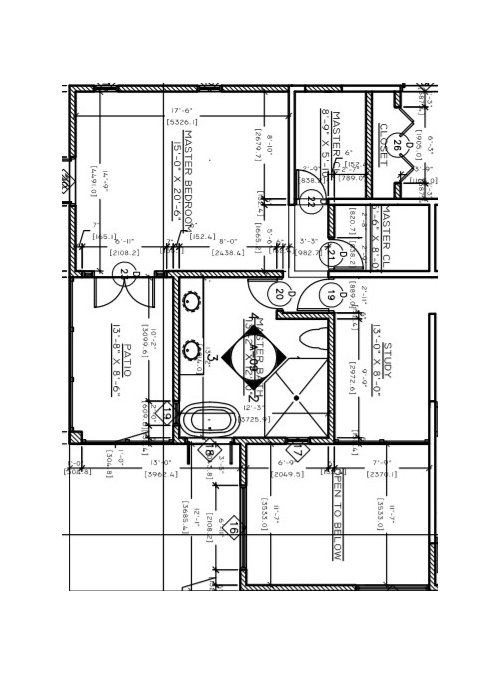
How To Show Ceiling Height In Floor Plan floorplans.click
A tray ceiling generally requires a height of at least a nine feet. A tray ceiling, another eye-catching architectural element, features a standard, flat, nine-foot ceiling around the perimeter of.

Standard ceiling height in London Powerpillar
The standard height for a ceiling today is 9 feet, although if it is a second-story house, then the second story will have 8-foot ceilings. Moreover, you will typically see 6.5-foot ceilings in basements and a 12 to 18 foot pitched ceiling in an attic. This guide will take you through the standard ceiling height and go a bit more in-depth about.

What Is The Average Ceiling Height
Basements without habitable spaces and hallways shall have a minimum ceiling height of no less than 6 feet 8 inches. Habitable spaces that have a sloped ceiling shall at no point have a ceiling height less than 5 feet and no less than 50% of the floor area shall have a ceiling height less than 7 feet. Showers and tubs with showerheads must have.
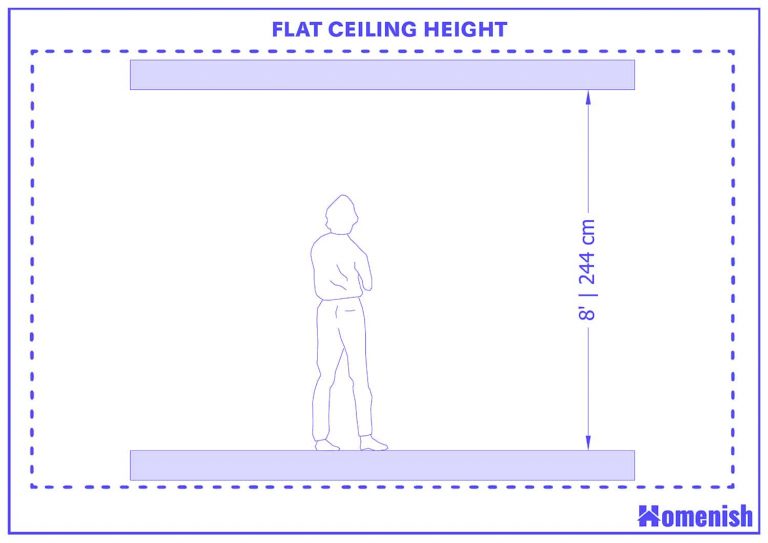
Standard Ceiling Height The Ultimate Guide (with 8 Diagrams) Homenish
The kitchen: Being a central area that is continuously used, it should be at least 9 feet 6 inches or 2.75m. A bedroom: Since it is a place of relaxation, the standard ceiling height is 7 feet 6 inches or 2.3m. A storeroom: It may be attached to the kitchen area. Its ceiling height is not less than 7 feet 6 inches.
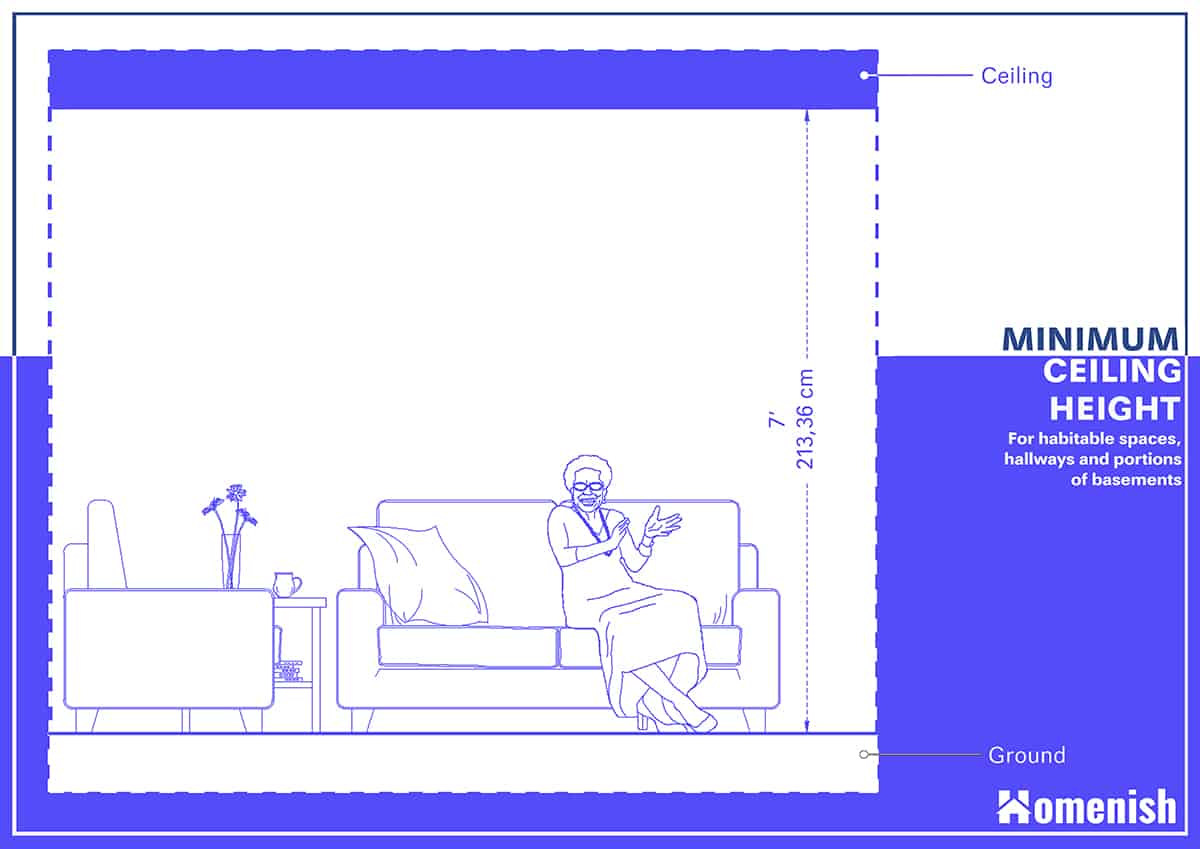
What is the Standard Ceiling Height and How is It Decided (with Diagrams)? Homenish
Standard Ceiling Height. A standard ceiling height of 8 feet is widely considered the minimum height for optimal functionality in American homes. This height allows for comfortable movement and flexibility in most rooms, including bedrooms, living rooms, and kitchens. However, this height may create a cramped feel in larger rooms and may not be.